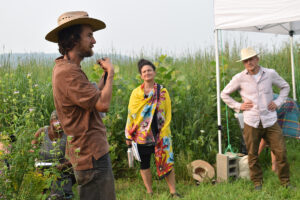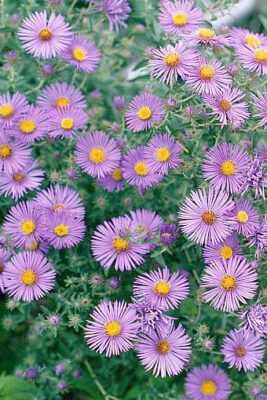
Ecological farming methods such as the use of cover crops can provide habitat for beneficial insects and birds while restoring soil health. The Hudson Valley Farm Hub is working with the Hawthorne Valley Farmscape Ecology Program and the Xerces Society for Invertebrate Conservation on two multi-year trials—the Native Meadow Trial and the Wet Meadow Trial—in an effort to study the effects of creating meadows in formerly tilled fields that are prone to erosion.
The Native Meadow Trial is situated on three one-and-a-half-acre plots of recently tilled and weed-free soil. At two of the sites, seed mixes were planted in varying proportions of grasses to wildflowers, while a third control site was left fallow for comparison. The Wet Meadow Trial is taking place in a partially vegetated wetland corridor. Here, a seed mix of native wetland varieties such as New England Aster, Riverbank Wild Rye, and Joe Pye Weed.

Seeding land that is prone to erosion can produce a variety of benefits, especially if the plants are perennials such as native grasses and wildflowers. These plants develop a permanent root system, anchoring them in place and preventing them from being blown away by winds or washed away during extreme weather events.

Wildflower and grass meadows also provide habitats for beneficial insects and grassland birds.
More broadly, the presence of meadows can enhance the relationship between cropland and the surrounding environment and improve agriculture production.
Over the course of the trials, the research team will record management actions such as mowing, and will periodically measure the conditions of the soil. Plants will be evaluated to see which species thrive and which struggle in certain conditions, and the presence of insects will be monitored to determine which seed mix attracts the most pollinators and pest predators.
Avian activity will also be looked at by the team. With proper management, larger grow outs of these native meadows can create the proper structure for nesting by grassland breeding birds whose numbers are in decline. These include the Eastern Meadowlark, Bobolink, and Grasshopper Sparrow. In addition, a planted native meadow can provide habitat to birds during migration and a winter home for protected species such as Northern Harrier and Short-eared Owl.
For the latest report on the Native Meadow Trial click here.
